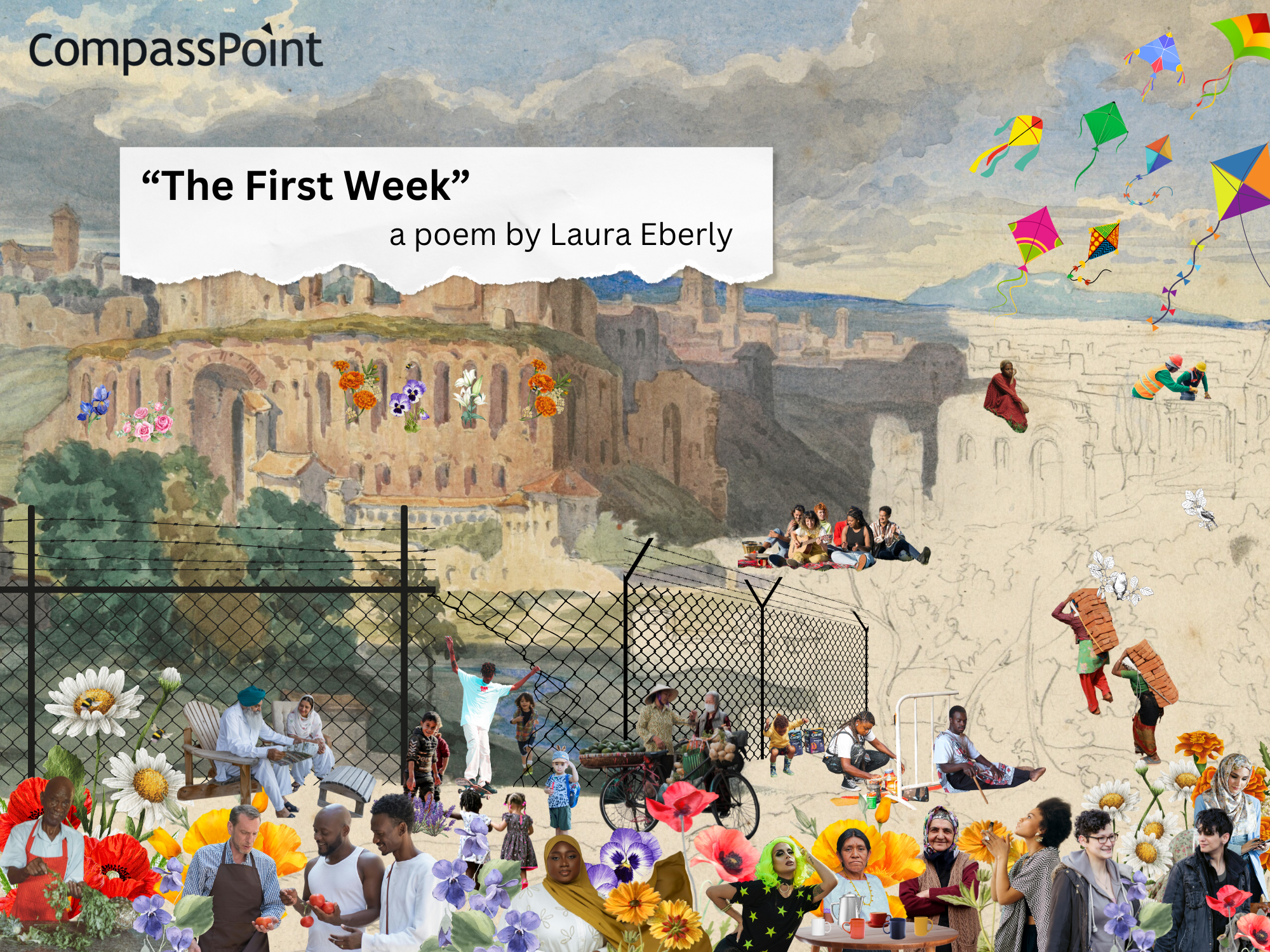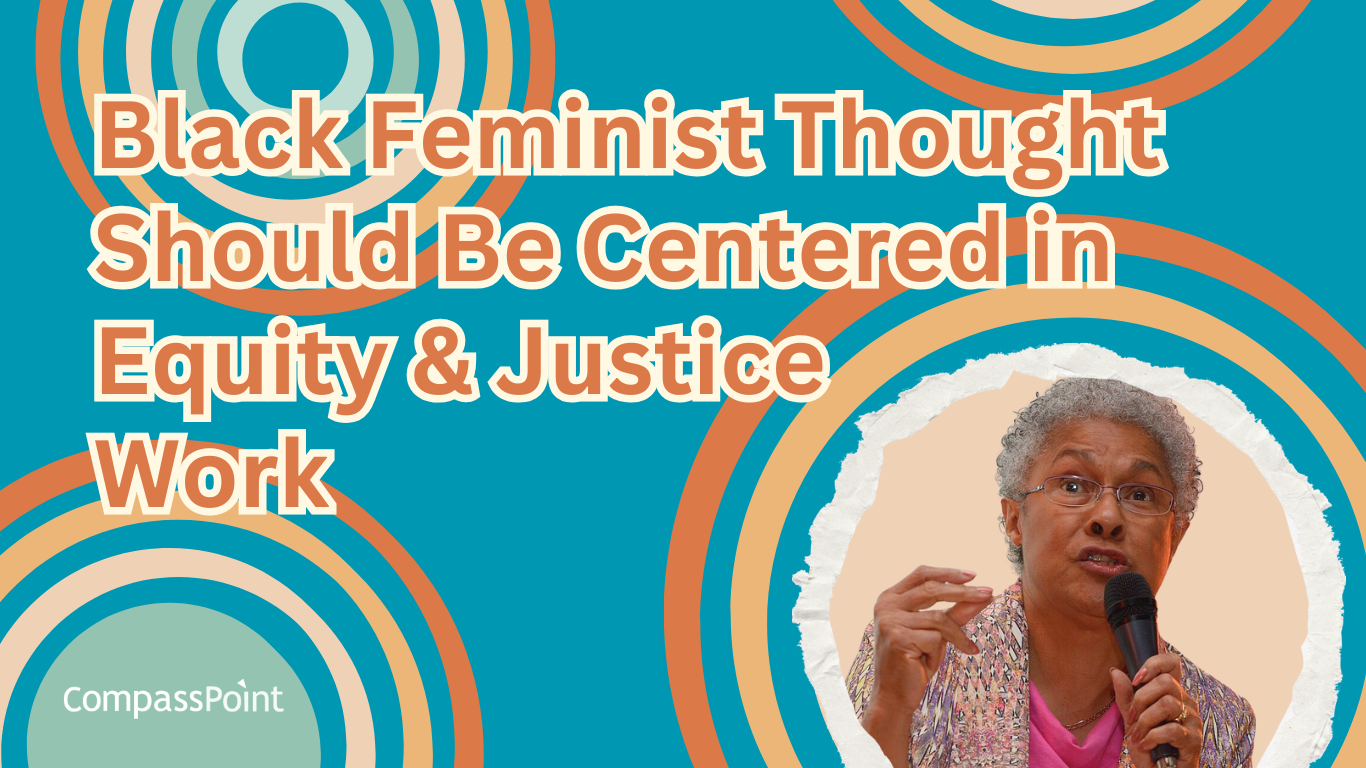In this guest blog, Elodie Baquerot and Nadia Owusu (Chief Operating Officer and Associate Director for Learning and Equity, respectively, at Living Cities) outline their organization’s long and intentional journey to center racial justice. Elodie and Nadia participated in CompassPoint’s Organizational Equity Leadership Development Program over the last year, along with five other grantees of the Kresge Foundation.

Living Cities is an organization that is working to close the racial income and wealth gaps in America’s cities. Racism is at the root of so many of the problems we are trying to solve, so addressing racism must be squarely at the center of how we work. But, it hasn’t always been. For the majority of our 27-year history, we worked in a largely race-neutral way. We didn’t explicitly name race in our mission or vision and we didn’t intentionally seek to hire staff with deep racial equity and inclusion competencies. That began to change in 2012.
Igniting the Spark for Radical Change
On February 26, 2012, a seventeen-year-old Black teenager named Trayvon Martin was shot and killed in Sanford, Florida, by George Zimmerman. Martin’s death ignited a national debate about racism and justice. It was on the nightly news and in the editorial pages. We heard from legal and criminal justice experts, historians, artists, Martin’s parents, and President Obama. And, across the country, people were having their own conversations. They were having them at dinner tables and at real and metaphorical water coolers. They were having them on social media and in the streets as a protest movement took hold. At Living Cities, we were having them, too. The days following the Zimmerman verdict were particularly tense at our office, as staff members found themselves in informal but reflective and sometimes emotional conversations about Martin’s death, Zimmerman’s acquittal, and the pervasiveness of racism in America. Several staff members felt that a robust interrogation of the impact of racial inequity on cities was noticeably absent from Living Cities’ work. These conversations eventually set us on a course to radically reconfigure the way the organization works around race.
Living Cities had been on our racial equity journey for a few years already by the time we were invited to be part of CompassPoint’s Organizational Equity Leadership Development Program (OELDP), sponsored by the Kresge Foundation, two years ago. At that point, we had done some important work but—in retrospect—we were still tinkering on the edges of what it means to really embed racial equity into ourselves and our organization. Over the course of the last 18 months—with the help of CompassPoint, the honesty and vulnerability of our colleagues in the OELDP cohort the mentorship and support of other partners along the way, and significant risk-taking on behalf of our own staff members— we have come to realize just how much the interpersonal and institutional are intertwined and symbiotic in racial equity work. What we now know with certainty is that we cannot do our jobs with any real accountability, let alone make progress towards our north star results of closing racial income and wealth gaps, if we aren’t grounded in the deep understanding that personal growth, individual journeys and, especially, the self-reflection and commitment by those at the leadership level with positional authority, are critical components of our potential for success.
Beyond a “Race-Neutral” Approach
By 2016, Living Cities had already moved past being race neutral in our external communications and had done an “audit” of all our programs to see if/how to embed equity in our work. We had also done some initial staff training and a series of activities to build staff competencies. But, our work to that point remained predominantly in the intellectual space; we had yet to dig much deeper. That lack of introspection and hesitance to hold a mirror up to ourselves, and to approach the work from a deeper emotional place, created significant dissonance between our words and our actions. We were asking our staff and grantees to do things out in the world that we weren’t yet ready or willing to do “back home.” Our participation in the OELDP cohort helped to reinforce for us just how much we needed to start from the inside out and how we had to bring humanity back into our day-to-day work. Over the course of the program, with coaching and support from CompassPoint, we acknowledged that organizations can change people, and—if you give them the space and the opportunity—people can also change organizations.
Up until then, we had certainly long been a diverse organization (which we prided ourselves on), but we weren’t yet a culture where everyone could thrive. We weren’t yet fully leveraging the voices and perspectives of our very diverse staff, nor the amazing wealth of experiences, exposure, and expertise they could all bring in service of closing the gaps, which was a huge missed opportunity. We had many staff that were ready, competent, and hungry to work on issues of racial equity and inclusion. But—despite all our best intentions and notions of how diverse and inclusive we were as an organization—the risk for them was too high, the environment too scary and unsupportive for them to do so in earnest or to name the truths that needed to be spoken.
Building a Shared Language and Embracing Difficult Conversations
Our staff needed to see leadership leaning in, actively committing to doing the personal work and willing to show vulnerability and admit what we didn’t know. As a starting point, within leadership and across the organization, we needed to build a shared language and analysis about race and racism in America past and present. As a 27-year-old organization working to improve outcomes for low income people in American cities, we had work to do to deepen our understanding of why people were poor in the first place. In doing so, no matter what issue or system we started with, it was consistently clear that racism was the root cause that maintained systems of inequity. In order to achieve our mission and support our colleagues in this work, we had to get comfortable talking about race. We needed to normalize difficult conversations and intentionally build up our tolerance for navigating through, rather than around, the conflict that would inevitably emerge from doing so.
Far too often, when staff members, particularly people of color, named how racism showed up in our own relationships and work, they were told that it was not the “right time or place” for it. Rather than addressing the problems, those brave staff members were seen as the problem. And, when the very real issues they raised were discussed, it was most frequently through an academic data-filled exercise. Recently, we have sought to change this by intentionally organizing time for the conversations. We know that we must welcome hard truths and conflict as a crucial part of our work. CompassPoint helped us recognize that conflict is “change trying to happen.” The ability to engage in conflict and to share personal experiences of structural, institutional, and interpersonal racism broke down a white institutional norm of politeness and silence. It also helped us to name existing power dynamics and structures that were, even if unintentionally, preserving such norms and perpetuating oppression within our own walls. And, speaking honestly about racism has opened the door for staff to bring more of themselves to the work and to speak honestly about issues beyond race and racism as well. More and more, we are pushing ourselves to approach our work through the lens of intersectionality, and to view meaningful relationships among colleagues as vital to our organizational success.
We intentionally dedicated time and space to reflecting on what it means to embed racial equity in everything we do and to treat it as a competency and daily practice that we needed to invest in to build, nurture, and grow. Along the way, CompassPoint shared with us that feedback is a gift. We maintained this value while talking about race, acknowledging that these conversations were often difficult. Rather than speaking about race in the exclusive context of data, we started discussing how race contributes to our lived experience and perception. We uplifted individual stories and validated feelings around race.
Over time, grounding ourselves in a shared language enabled us to be explicit about our goals and use clarity to take action. Speaking about white institutional culture gave us the tools we needed to begin to dismantle it within our own organization. Minding that an organization is comprised of individuals, every member of Living Cities staff was asked to actively engage and reflect. Each of us—on our own journeys and in our ways–began to address our individual biases, preferences, and habits and consider how they may be contributing to inequitable systems.
We were able to see the impacts of normalizing conversations about race relatively quickly. We continued to develop our new understanding of peer accountability by implementing ideas that would maintain an environment that welcomes conversations about race. We developed a new team called CORE (Colleagues Operationalizing for Racial Equity) to support staff in continuing to build competencies around racial equity and hold other teams accountable. Coaching was made available for all staff to grow in their personal racial equity journeys. We started hosting affinity groups and book clubs for staff to share their experiences and offer feedback and solidarity to one another. Ultimately, all of these internal support structures have contributed to Living Cities’ organizational growth and capacity for external impact.
Putting Racial Equity in the Center
Our growth started with listening to and really hearing our staff as they raised major concerns they were grappling with. It continued, eventually, with a fundamental recognition that we could not be fully equipped to support others to do this work as individual staff and as an organization if we weren’t doing it ourselves. As our competencies increased, it quickly became clear that this racial equity work couldn’t be a “side initiative” or a “nice to have,” but rather that it had to be the work. This doesn’t mean navel gazing. It does mean living our values. It means articulating what that means and holding ourselves collectively and individually accountable. It means being willing to change as people and as an organization so that we can be better partners to those we work with in the field, better partners to the communities we serve. It means doing the work of questioning how decisions get made about where our money goes and who it goes to. For example, we now have a procurement policy that privileges awarding contracts to companies owned by people of color. We have shifted the focus of our impact investing fund from "improving the lives of low-income people" to “closing racial income and wealth gaps.” We are working to articulate a policy to ensure that organizations we partner with go through anti-racism training, and we are sponsoring those trainings around the country.
Over time, with the help of incredible partners, mentors, coaches, and peers, we came to understand that this inside work of holding the mirror up and considering how we were each building our racial equity practice at a personal, role-based, and systemic level was, in fact, MISSION CRITICAL to closing racial income and wealth gaps. We are ever a work in progress, but what we know and live very deeply every day is that the impact of our programmatic work, our communications, our influence, is only as good as the depth of our own competencies and our common alignment around a shared result.
For more details on our journey, with themes adapted from CompassPoint’s materials, check out our annual report.
Resources:





Submit a comment